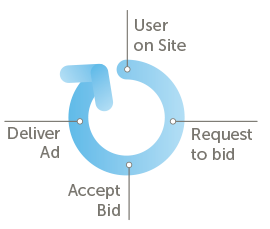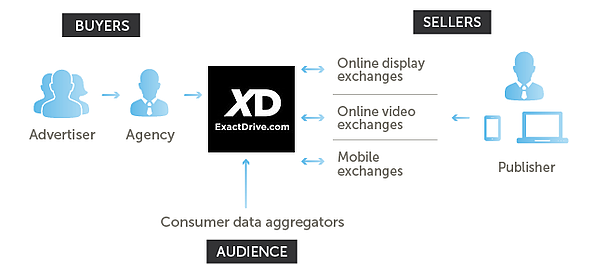 Media buying has evolved significantly in the past few years, with the increased utilization of programmatic media buying platforms. Traditionally, advertisers would reach out to publishers and negotiate deals to get their products and services displayed to the masses, but once ad networks came to fruition, the purchase of inventory was possible on a scale not seen previously. Real-time media buying brochure.
Media buying has evolved significantly in the past few years, with the increased utilization of programmatic media buying platforms. Traditionally, advertisers would reach out to publishers and negotiate deals to get their products and services displayed to the masses, but once ad networks came to fruition, the purchase of inventory was possible on a scale not seen previously. Real-time media buying brochure.
Once advertisers learned they could buy bulk inventory through aggregators; real-time ad exchanges emerged, trading impressions that publishers could not sell directly through their in-house sales teams. This has led to the introduction of automated or programmatic media buying, made possible by a technology known as real-time bidding (RTB).
Using real-time bidding, brands can deliver better-targeted campaigns; gain richer audience insight, and maximize their marketing ROI.
What is Real-Time Media Buying?
Real-Time media buying is a variation of programmatic buying. It allows advertisers to bid for the right to serve an ad to a particular person, on an impression by impression basis.
The technology is an effective way to get the right ad in front of the right person at the right time, and for advertisers, buying ads in real-time is becoming the go-to method to quickly and efficiently execute a branding campaign.
With this in mind, let’s take a look at 3 reasons why we love Real-Time Media Buying and you should too!
1. Buying and Valuation
Real-time bidding enables brands to bid on individual impressions rather than agreeing to a predetermined price. Buying online media in real-time is cost-effective, reduces waste, and prevents advertisers from overpaying for media. Real-time bidding means brands only pay what an impression is truly worth.
2. Targeting Technology
Advertisers are becoming more aware of the benefits of first and third-party data to target desired audiences. With the help of third-party data, vendors and advertisers can create a detailed profile of their target consumer, by modeling the attributes of existing customers. By taking advantage of first-party data, advertisers can optimize their audience based on known quantities – their own customer base. Real-time bidding allows advertisers to access the media they want, for the people they choose.
3. Dynamic Optimization and Real-Time Analytics
The ability to update a campaign in real-time is a huge benefit with real-time buying because performance data is made available as the campaign runs. Advertisers can adjust their campaigns when big news stories hit, update their site lists or add/remove ad units from their campaigns on the fly, based on performance.



